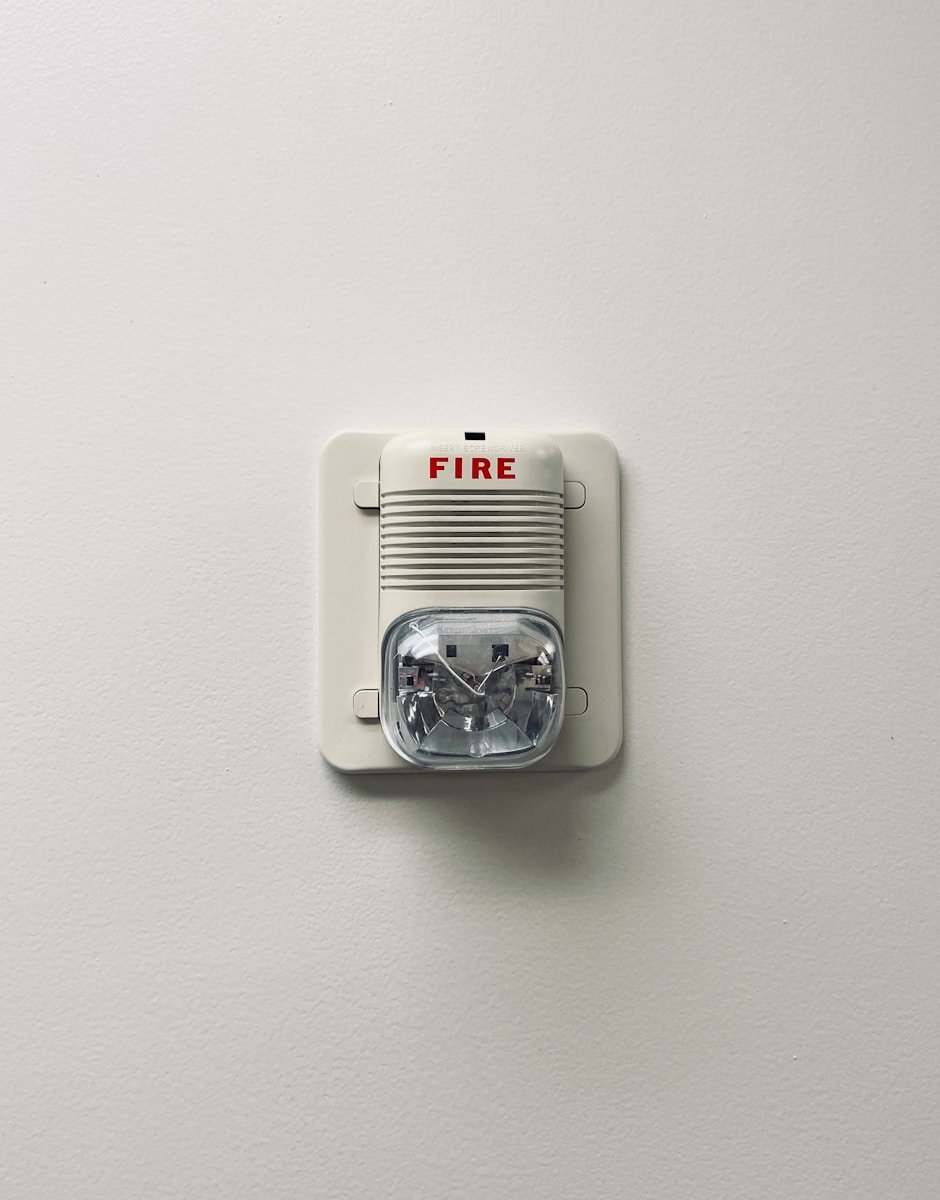Few things are more frustrating than a smoke alarm blaring when there’s no fire in sight. Smoke alarms can go off without smoke due to several common issues including low batteries, dust buildup, humidity, bugs inside the device, chemical fumes, oversensitivity, or electrical malfunctions. Understanding these triggers can help homeowners quickly troubleshoot and resolve false alarms.
For hardwired smoke detectors, the culprits may be slightly different. Power surges, intermittent electrical issues, or interconnected systems can cause one alarm to trigger others in the home. Steam from showers or cooking vapor can also fool sensors into detecting particles similar to smoke, especially in units positioned near kitchens or bathrooms.
Addressing these false alarms isn’t just about stopping the noise—it’s about maintaining proper home safety. When smoke detectors cry wolf too often, people might disconnect them out of frustration, leaving homes vulnerable to actual fires. Regular maintenance and proper placement can significantly reduce these unexpected and unwanted alerts.
Why Would a Smoke Alarm Go Off Without Smoke? Understanding False Alarms and How to Fix Them
Smoke alarms are essential safety devices designed to alert you to potential fire hazards, giving you precious time to act. But what happens when your smoke alarm goes off without any smoke or fire present? False alarms can be frustrating, disruptive, and sometimes even dangerous if they cause complacency.
In this guide, we’ll explore why smoke alarms go off without smoke, the common triggers behind false alarms, and effective steps to prevent and resolve these issues — helping you maintain a safe and peaceful home environment.
The Purpose of Smoke Alarms and How They Work
Smoke alarms detect particles in the air using one of two main technologies:
- Ionization Smoke Detectors: Better at detecting fast-flaming fires; they use a small radioactive source to ionize air and detect changes caused by smoke.
- Photoelectric Smoke Detectors: Better at sensing smoldering, slow-burning fires; they use a light beam and sensor to detect smoke particles interrupting the beam.
Both types are highly sensitive to airborne particles, which is why they can sometimes trigger without actual smoke.
Common Reasons Why a Smoke Alarm Goes Off Without Smoke
1. Dust and Dirt Accumulation
Dust particles can settle inside the smoke detector, mimicking the presence of smoke and triggering false alarms. Over time, buildup interferes with the sensor’s ability to differentiate between smoke and dust.
Solution: Regularly clean your smoke alarms by vacuuming around the vents and wiping the exterior with a dry cloth.
2. Low or Dying Batteries
A low battery can cause the alarm to chirp intermittently or sound fully without smoke. Sometimes, the alarm may misinterpret the weak power supply as a hazard.
Solution: Replace batteries at least once a year or when your alarm signals low battery. Consider using long-life lithium batteries for fewer replacements.
3. Steam and Humidity
Steam from showers, cooking, or humidifiers can confuse smoke alarms, especially photoelectric types, causing false alarms.
Solution: Install smoke alarms away from bathrooms and kitchens or use alarms with built-in humidity resistance. Use exhaust fans to reduce steam buildup.
4. Insects and Small Pests
Tiny insects can crawl into the smoke detector, interfering with sensors and causing false alarms.
Solution: Inspect and clean your smoke alarms regularly. Consider using insect repellent sprays around the device (not inside) or installing insect-proof covers.
5. Strong Chemical Odors or Aerosols
Sprays like air fresheners, paint, cleaning chemicals, or even cigarette smoke can trigger alarms by releasing particles or gases that the sensor mistakes for smoke.
Solution: Avoid spraying aerosols near smoke detectors and ventilate rooms when using strong chemicals.
6. Electrical Issues
Hardwired smoke alarms may malfunction due to wiring problems, power surges, or incompatible devices on the circuit.
Solution: Have a qualified electrician inspect your smoke alarm wiring if false alarms persist. Replace outdated or malfunctioning units.
7. Age of the Smoke Alarm
Smoke detectors generally have a lifespan of about 8-10 years. Older alarms become less reliable and prone to false alarms.
Solution: Replace smoke alarms every 10 years or according to the manufacturer’s recommendations.
8. Environmental Factors
- Temperature fluctuations: Extreme heat or cold can affect sensor sensitivity.
- Airflow: Fans, vents, or open windows can direct dust or particles toward the alarm.
- Nearby devices: Some electronic devices emit interference that may trigger alarms.
How to Troubleshoot and Fix False Smoke Alarm Alarms
- Reset the Alarm: Many alarms have a reset button. Press and hold it to clear false alarms.
- Clean the Alarm: Remove the cover and vacuum inside carefully.
- Replace Batteries: Swap out old batteries with fresh ones.
- Relocate the Alarm: If placed too close to kitchens or bathrooms, move it to a better location.
- Replace the Alarm: If problems persist, invest in a new, high-quality smoke alarm with advanced false alarm resistance.
- Professional Inspection: For hardwired systems, call an electrician to check wiring and connections.
Advanced Solutions: Smart Smoke Alarms
Modern smart smoke alarms like Nest Protect and First Alert Onelink offer:
- Self-testing and alerts to your smartphone.
- Voice notifications that specify the type and location of the hazard.
- Reduced false alarms through advanced sensors and algorithms.
- Integration with smart home systems for enhanced safety.
Investing in smart detectors can significantly reduce false alarms and improve home safety.
Why False Alarms Shouldn’t Be Ignored
Even if your smoke alarm goes off without visible smoke, never dismiss it outright. False alarms can indicate:
- Sensor malfunction.
- Environmental hazards.
- The need for maintenance.
Regular testing and maintenance ensure your smoke alarms function correctly when a real emergency arises.
Key Takeaways
- Smoke alarms commonly trigger falsely due to low batteries, dust accumulation, humidity, or nearby cooking vapors.
- Hardwired systems may sound because of electrical issues, power surges, or when one detector in an interconnected system detects a problem.
- Regular cleaning, proper placement, and timely battery replacement can prevent most false alarms while maintaining home safety.
Understanding Smoke Alarms
Smoke alarms are essential safety devices that detect smoke particles in the air and alert occupants to potential fire hazards. These life-saving devices operate through different detection methods and require regular maintenance to function properly.
Types of Smoke Alarms
There are several types of smoke alarms available for residential use, each with distinct detection mechanisms:
Ionization Smoke Detectors: These contain a small amount of radioactive material that ionizes the air between two electrically charged plates. When smoke enters the chamber, it disrupts the ion flow, triggering the alarm. They respond quickly to fast-flaming fires but may be slower to detect smoldering fires.
Photoelectric Smoke Detectors: These use a light source and a photocell sensor. When smoke enters the chamber, it scatters the light beam, which hits the photocell and triggers the alarm. They’re more responsive to smoldering fires than ionization detectors.
Dual-Sensor Alarms: These combine both technologies for comprehensive protection against different types of fires.
Smart Smoke Alarms: Modern versions can connect to home Wi-Fi networks, sending alerts to smartphones and integrating with home security systems.
Functionality of Smoke Detectors
Smoke detectors operate on simple principles but contain sophisticated electronics. When activated, most models emit a loud 85-decibel alarm to alert occupants.
Many units feature sensitivity settings that can be adjusted to prevent false alarms while maintaining safety standards. These settings help balance detection capability with practical everyday living, especially in areas like kitchens where cooking smoke is common.
Most modern smoke alarms also include a test button to verify proper function. This button simulates the detection of smoke and confirms the alarm circuit and speaker work correctly.
Battery-powered models monitor their power levels continuously. When batteries begin to fade, the unit typically emits intermittent chirps as a warning. Hardwired models usually include battery backups for power outages.
Regular Maintenance
Regular maintenance is crucial for smoke alarm reliability. Experts recommend testing smoke alarms monthly by pressing the test button until the alarm sounds.
Battery replacement should occur at least once annually, though some newer models feature 10-year sealed batteries. Even hardwired systems need battery backup checks to ensure continuous protection during power outages.
Dust accumulation can cause false alarms or prevent proper detection. Gentle vacuuming around the alarm’s openings removes dust and debris without damaging internal components.
Smoke alarms have a limited lifespan—generally 8-10 years. The manufacturing date is typically printed on the back of the unit. Replace smoke alarms that exceed this age, even if they still seem functional.
Keep a maintenance log tracking test dates, battery replacements, and installation dates to ensure timely replacement of aging units.
Common Causes of False Alarms
Smoke alarms can trigger without any actual smoke present due to various environmental factors and maintenance issues. Understanding these triggers can help homeowners prevent unnecessary alarms and ensure their detection systems function properly when truly needed.
Humidity and Steam
High humidity levels can cause smoke detector sensors to mistake water particles for smoke particles. This commonly happens in homes during humid summer months or in areas near bathrooms and kitchens where steam is produced.
When showering with hot water, the steam can trigger alarms installed too close to bathrooms. Similarly, boiling water on stovetops generates steam that rises to ceiling-mounted detectors.
To prevent these false alarms, homeowners should:
- Install smoke detectors at least 10 feet away from bathrooms
- Use bathroom exhaust fans when showering
- Consider humidity-resistant smoke detector models for humid climates
- Keep kitchen detectors a reasonable distance from cooking appliances
Opening windows or using dehumidifiers during high humidity periods can also reduce the risk of false alarms.
Temperature Fluctuations
Extreme temperature changes can affect the electronic components inside smoke detectors, causing them to malfunction and trigger false alarms.
Cold air rushing past a detector can cool internal components rapidly, creating condensation that interferes with sensors. This often happens near windows, exterior doors, or HVAC vents where drafts occur.
Heat can also be problematic. Detectors installed too close to heating vents or in attics that become extremely hot during summer months may trigger unnecessarily.
Best practices include:
- Placing detectors away from windows and exterior doors
- Maintaining at least 3 feet distance from HVAC vents
- Avoiding installation in uninsulated attics or areas with extreme temperature swings
- Choosing models rated for wider temperature ranges in challenging environments
Modern “smart” detectors often include temperature monitoring features that help reduce false alarms from this cause.
Insect Infestation
Bugs and small insects can enter smoke detectors through the sensing chamber openings, triggering false alarms. This problem is particularly common during warmer months when insect activity increases.
Smoke detectors contain small openings designed to allow smoke to enter the sensing chamber. Unfortunately, these same openings provide perfect entry points for tiny insects seeking shelter or warmth.
When insects block sensors or interfere with the internal circuitry, the alarm may sound for seemingly no reason. Spider webs built inside detectors can also trigger false alarms by blocking sensors.
Prevention methods include:
- Regular cleaning of detector exteriors
- Vacuuming gently around detector openings
- Using compressed air to blow out small debris and insects
- Applying pest control measures in areas prone to insect activity
Manufacturers now design some models with finer mesh screens to prevent insect entry while maintaining smoke detection capabilities.
Dust and Airborne Particles
Dust accumulation inside smoke detectors is one of the most common causes of false alarms. Detectors work by sensing particles in the air, and they cannot distinguish between smoke particles and dust particles.
Construction projects, home renovations, or even routine cleaning can stir up dust that triggers sensors. Detectors in rarely-cleaned areas like attics, basements, or high ceilings are particularly susceptible to dust buildup.
Pollen, pet dander, and other airborne particles can also enter detection chambers and cause false readings. This explains why some homes experience more false alarms during spring allergy seasons.
Maintenance tips include:
- Gently vacuuming detector exteriors monthly
- Using compressed air cans to clean sensing chambers (with power disconnected)
- Replacing detectors in extremely dusty environments more frequently
- Covering detectors during renovation projects
Most manufacturers recommend completely replacing smoke detectors every 10 years, as dust accumulation eventually becomes unavoidable.
Strong Chemicals and Fumes
Volatile organic compounds (VOCs) and chemical fumes can trigger smoke alarms by mimicking smoke particles. These false alarms commonly occur during painting, cleaning, or other activities involving strong chemicals.
Hairsprays, air fresheners, and aerosol products used near detectors can cause immediate false alarms. Even strong-smelling cooking ingredients like vinegar or ammonia can trigger sensitive detectors.
Insecticides and pest control foggers are particularly problematic, as they release fine particulates that smoke detectors interpret as smoke. New furniture or carpeting that off-gases VOCs may cause intermittent alarms.
To prevent these chemical-induced false alarms:
- Use cleaning products and aerosols away from detector locations
- Ensure proper ventilation when painting or using strong chemicals
- Cover detectors temporarily during heavy chemical use
- Allow new furniture to off-gas in well-ventilated areas before bringing indoors
Some newer detector models incorporate advanced sensors that can differentiate between smoke and common household chemicals.
Electrical and Technical Issues
Smoke alarms can activate without smoke due to various electrical and technical problems. Understanding these issues helps homeowners troubleshoot false alarms and maintain proper functioning of these critical safety devices.
Low Battery and Battery Replacement
Low batteries are the most common cause of false alarms in smoke detectors. When battery power decreases below a certain threshold, detectors are designed to chirp or sound an alarm as a warning signal. This safety feature ensures homeowners are alerted before the battery fails completely.
Most battery-powered smoke alarms need replacement batteries every 6-12 months. When replacing batteries, use the type recommended by the manufacturer – typically 9-volt or AA batteries depending on the model.
Some newer smoke detectors come with sealed lithium batteries designed to last 10 years. These units don’t require battery replacement but must be replaced entirely when they reach the end of their lifespan.
Signs of low battery:
- Intermittent chirping (usually every 30-60 seconds)
- Alarm going off randomly without smoke
- Reduced sensitivity to actual smoke
Malfunctions in Hard-Wired Units
Hard-wired smoke alarms connect directly to a home’s electrical system but can still experience technical issues. Power surges, electrical fluctuations, and wiring problems may trigger false alarms.
Most hard-wired units include backup batteries that can cause problems when they’re low or improperly installed. Check both the main power connection and backup battery when troubleshooting.
Dust and debris accumulation on internal components can interfere with the electrical current and trigger false alarms. Regular cleaning helps prevent this issue.
Interconnected systems, where multiple alarms are linked, can experience chain reactions. If one unit detects a problem, all connected alarms will sound. Identifying which unit triggered the alert helps pinpoint the source of the malfunction.
Ionization Chamber Sensitivities
Ionization smoke detectors use a small amount of radioactive material to create an electrical current within an ionization chamber. When smoke particles enter this chamber, they disrupt the electrical current, triggering the alarm.
These detectors are particularly sensitive to:
- Small smoke particles from cooking
- Steam from showers or cooking
- High humidity levels
- Insects entering the chamber
- Chemical vapors and aerosols
Temperature fluctuations can also affect the sensitivity of ionization chambers. Rapid changes in temperature may cause the air inside the chamber to expand or contract, potentially triggering a false alarm.
Regular cleaning helps prevent buildup that might interfere with proper functioning of the ionization chamber. Use compressed air to gently remove dust without damaging internal components.
Handling of False Alerts
When a smoke alarm activates without smoke, don’t disconnect it immediately. First, check for hidden sources of smoke or smoldering. If you’re certain it’s a false alarm, take appropriate action.
For persistent false alarms, try these solutions:
- Clean the detector using compressed air or a vacuum with a soft brush attachment
- Replace the batteries even if they seem functional
- Relocate the alarm away from kitchens, bathrooms, or areas with temperature fluctuations
When to replace your smoke detector:
- If it’s more than 10 years old
- After multiple unexplained false alarms
- When cleaning and battery replacement don’t resolve issues
- If it fails the test button check
Document patterns of false alarms to help identify triggers. Note the time, nearby activities, weather conditions, and which specific unit activated to spot trends that might reveal the underlying cause.
Preventative Measures
Taking proactive steps can significantly reduce false alarms and ensure smoke detectors function properly when needed. These measures address common triggers while maintaining the life-saving capabilities of your smoke alarm system.
Reducing Humidity and Moisture
High humidity levels can trigger smoke alarms unnecessarily. Installing proper ventilation in bathrooms and kitchens helps prevent moisture buildup that might activate sensors. Exhaust fans should be used during showers and cooking to direct steam away from detectors.
For homes in naturally humid climates, maintaining indoor humidity between 30-50% using dehumidifiers can prevent false alarms. Position smoke detectors at least 10 feet away from bathrooms and cooking areas when possible.
Weather changes can cause condensation inside detectors. Some newer models include humidity-resistant features specifically designed to minimize false alarms from moisture. If frequent humidity-related false alarms occur, consider upgrading to these models.
Increasing Detector Sensitivity
Most modern smoke detectors allow for sensitivity adjustments. Check the manufacturer’s instructions to find sensitivity controls, which may be accessible via small switches or buttons on the device itself.
For smart smoke detectors, adjustment options are typically available through companion apps. Decreasing sensitivity slightly can reduce nuisance alarms while still maintaining safety. Never adjust sensitivity below manufacturer recommendations, as this compromises safety.
Some advanced models offer adaptive sensitivity that automatically adjusts based on environmental conditions. These “smart” detectors learn patterns and minimize false alarms without compromising protection during actual emergencies.
Consider dual-sensor smoke detectors that combine ionization and photoelectric technologies. These provide better overall protection while reducing false alarms through more accurate detection methods.
Addressing Pests and Insects
Small insects can enter smoke detector openings and trigger false alarms. Apply a small amount of pest repellent around (never inside) the detector housing to create a barrier against bugs. Avoid spraying chemicals directly onto the unit.
Seal any visible gaps or cracks in ceilings and walls near smoke detectors to prevent insect infiltration. Some homeowners place small mesh screens over detector vents, though this should be done cautiously to avoid blocking smoke entry.
Pest-specific false alarms tend to be more common during warm seasons. If you notice a pattern of alarms during specific times of year, consider scheduling professional pest control treatments before these periods begin.
Spider webs are particularly problematic as they can mimic smoke particles. Regular visual inspection can identify and remove these potential triggers before they cause alarms.
Regular Cleaning of Smoke Detectors
Dust accumulation is a primary cause of false alarms. Clean smoke detectors every 3-6 months using a vacuum cleaner with a soft brush attachment. Gently vacuum the exterior vents and openings without removing the cover.
For more thorough cleaning, remove the detector from its mounting bracket (after turning off power for hardwired models) and use compressed air to blow out dust. Never use water or cleaning solutions as these can damage sensitive components.
Pay special attention to cleaning detectors in areas prone to dust, such as near air vents, ceiling fans, or in rooms with fabric furniture. Kitchen detectors require more frequent cleaning due to airborne cooking particles.
Mark cleaning dates on your calendar or set phone reminders to establish a regular maintenance schedule. Some smart detectors now include self-diagnostic features that alert you when cleaning is needed.
When to Consider Replacement
Smoke detectors have a limited operational lifespan and require replacement to ensure reliable protection. Regular maintenance can extend their functionality, but certain indicators signal when it’s time for a new unit.
Lifespan of Smoke Alarms
Most smoke alarms have a lifespan of approximately 10 years. After this period, the sensors may become less sensitive or unreliable, leading to frequent false alarms. Manufacturers typically include an expiration date or manufacturing date on the device.
Users should check this date regularly and plan for replacement before the unit reaches the end of its recommended lifespan. A smoke detector that frequently chirps despite having new batteries often indicates it has reached the end of its useful life.
Signs your smoke alarm needs replacement:
- The unit is older than 10 years
- Frequent false alarms despite cleaning
- Failure to respond during monthly testing
- Inconsistent alarm sounds or chirping
- Physical damage to the housing or internal components
Upgrading to Advanced Detectors
Modern smoke detectors offer significant improvements over older models, providing enhanced protection and convenience. Newer technologies include dual-sensor smoke alarms that combine ionization and photoelectric detection methods, reducing false alarms while improving response to different types of fires.
Smart smoke detectors connect to home Wi-Fi networks, sending alerts to smartphones when triggered. This feature proves especially valuable when homeowners are away. Some advanced models incorporate carbon monoxide detection, eliminating the need for separate devices.
Benefits of upgraded smoke alarms:
- Reduced false alarms
- Remote monitoring capabilities
- Interconnected systems that trigger all alarms when one detects smoke
- Voice alerts with specific location information
- Longer battery life with lithium batteries
Many fire departments recommend photoelectric smoke detectors over ionization models for their superior detection of smoldering fires, which are common in homes.
Strategies to Prevent False Alarms
Preventing smoke alarm false alarms requires strategic placement, proper maintenance, and correct sensitivity settings. These practical steps can significantly reduce nuisance alarms while maintaining safety.
Choosing the Right Detector Locations
Smoke alarms should be installed at least 10 feet away from cooking appliances to prevent cooking-related false alarms. For kitchens, heat detectors or photoelectric smoke alarms are better options than ionization detectors, which are more sensitive to cooking particles.
Bathrooms and laundry rooms should use humidity-resistant alarms, as steam can trigger false alarms. Avoid placing detectors near windows, doors, or vents where drafts might interfere with proper operation.
For maximum protection with minimal false alarms, install detectors in hallways and sleeping areas rather than directly inside rooms where activities might trigger them unnecessarily. Consider installing detectors at least 3 feet away from air vents to prevent dust circulation that can cause false alarms.
Optimizing Sensitivity Settings
Many modern smoke detectors offer adjustable sensitivity settings that can be customized to the environment. Check the manufacturer’s instructions to determine if your model allows for sensitivity adjustments.
Some smart smoke detectors can be programmed through apps to lower sensitivity during cooking hours or in specific zones of the house. This technology maintains protection while reducing unnecessary alarms.
For ionization smoke detectors, which are particularly prone to false alarms, consider replacing them with photoelectric models in areas near kitchens. Photoelectric detectors are less sensitive to small particles from cooking but still effective at detecting actual smoke.
Sensitivity Adjustment Options:
- Temporary silencing buttons for cooking activities
- Programmable reduced sensitivity during certain hours
- Zone-specific settings in interconnected systems
Educating Residents and Users
Create a household plan that includes proper ventilation during cooking or shower use. Opening windows or using exhaust fans can prevent steam and cooking vapors from reaching detectors.
Teach residents how to use the silence or hush feature on smoke alarms instead of removing batteries when cooking. Most detectors have a button that temporarily reduces sensitivity for about 10 minutes.
Establish a regular maintenance schedule including:
- Monthly testing using the test button
- Battery replacement twice yearly (during daylight saving time changes)
- Gentle vacuuming of the detector exterior every 3-6 months
Proper education prevents dangerous practices like removing batteries or disabling alarms out of frustration from false alarms, maintaining safety while reducing nuisance alerts.







